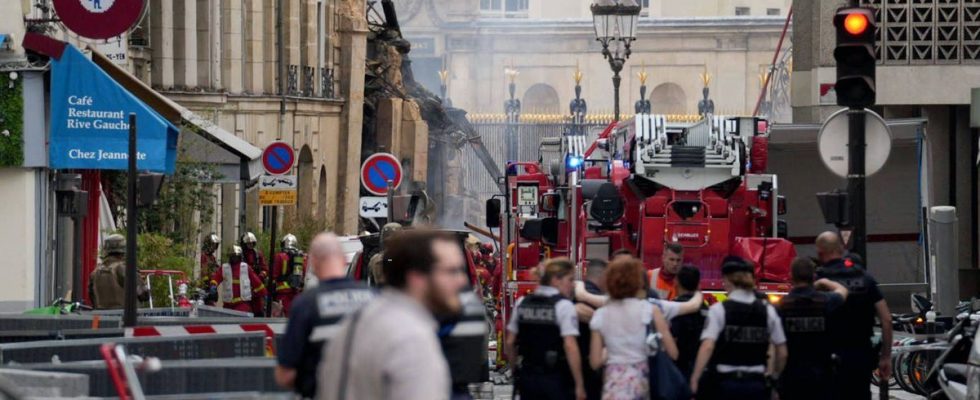Published on
Updated
Reading 3 mins.
in collaboration with
Dr Gérald Kierzek (Medical Director)
Medical validation:
June 23, 2023
On Wednesday June 21, a Parisian building collapsed following a very strong explosion, the cause of which is not precisely known. How is relief organized in such cases, what are their priorities? We talk about it with Dr Gérald Kierzek, emergency doctor and medical director of Doctissimo.
It is 4:50 p.m. on June 21, 2023 when a huge explosion freezes an entire street in the 5th arrondissement of Paris, probably due to a gas leak, according to the first hypotheses. The affected building collapses, ravaged by the impact and the flames. Other buildings are damaged. It is then a whole emergency system that is put in place, to save lives and come to the aid of the injured. We are talking about 270 firefighters and 70 vehicles. How then are the interventions organized to be effective?
Securing the area, priority number 1
In such a drama, nothing is left to improvisation and the teams on site know their job. “Priority number 1 is to protect the area and establish an adequate security perimeter” explains Dr Gérald Kierzek, emergency doctor and medical director of Doctissimo. The first responders therefore arrive to secure the area, not to expose the rescue teams and to size the needs for resources in order to establish the requests for reinforcement. “In this specific case, we are on what is called a catastrophic accident with limited effect (ACEL) because it does not require the triggering of a red plan or NOVI (Number of Victims), we have sufficient means to treat it”.
Then come quickly in a second time, the stopping of the fire in progress and all the measures taken to avoid the “additional accident” because of the gas. A fairly wide security perimeter is established first. This also determines the sizing of the fire teams, the medical teams and the advanced medical post (such as a field hospital to be deployed), which is placed outside the security perimeter.
Victims prioritized and evacuated
“The purpose of this introduction is to be able to extract the victims as quickly as possible but safely to the advanced medical post” explains Dr. Kierzek.
On this advanced medical post, the wounded are then prioritized according to their damage; according to 4 categories, using a bracelet:
- deceased persons;
- People in absolute emergency or UA (neurological, respiratory, hemorrhagic distress, etc.);
- People in relative emergency (UR);
- The people involved, who are not physically injured, but who were on the scene and are psychologically affected.
“Attention, relative urgency does not mean minor injury” corrects the paramedic. “If you are the victim of a crash on the legs, it does not threaten your vital prognosis but you can keep a handicap”. The categories can therefore be re-classified.
Then, the evacuation of the most seriously injured is ordered. “They are stabilized on the spot (intubation, bleeding stop, etc.) then they are evacuated to hospitals with “trauma centers”, capable of treating burned and polytraumatized victims, who perform resuscitation and surgery“says our expert.
Why are the most seriously injured taken elsewhere?
The decision may come as a surprise: the most seriously injured are often evacuated to a hospital far from the scene of the accident. A logical decision for Dr. Kierzek: “The objective is not to saturate the local networks to which people can go on foot, in an emergency”.
How long do you search for survivors in the rubble of an explosion?
This Thursday morning, an imbruglio misled the French: Emmanuel Grégoire, first deputy mayor of Paris announced the end of the search, the last missing person having been found overnight in the hospital. This is however false, research continues.
“Until all the debris is checked, until all the reconnaissance is done, we don’t know, by definition, who is underneath or if there is anyone underneath. A missing person may simply be on vacation and offline. Conversely, a person who was not staying there could spend the week there…”
A recognition that is done thanks to the search and rescue team in urban environments (RSMU), as well as the canine rescue units, which notably use cameras and dogs accustomed to spotting humans in the rubble. The search will probably continue for several hours or even days. But it remains complicated, points out Dr. Kierzek, “unlike an earthquake, for example, the sense of smell of animals can be disturbed by fire”.
According to a provisional assessment at the time of writing, 50 people are injured, six people are in absolute emergency, and another is still wanted in the rubble.
